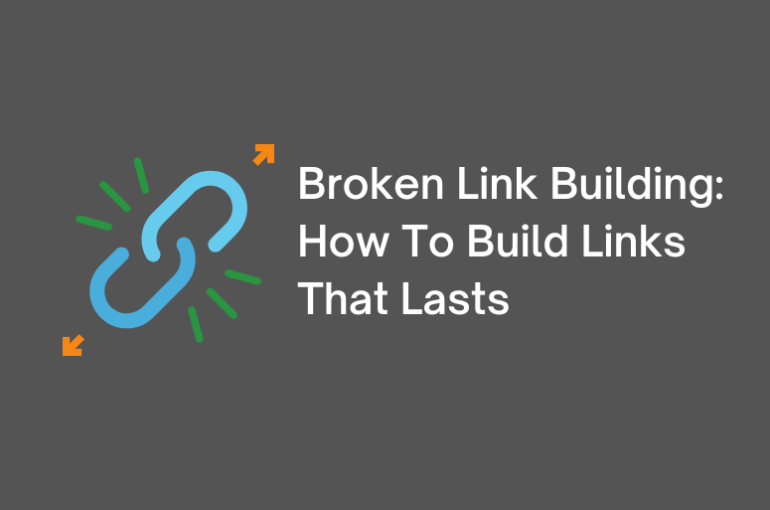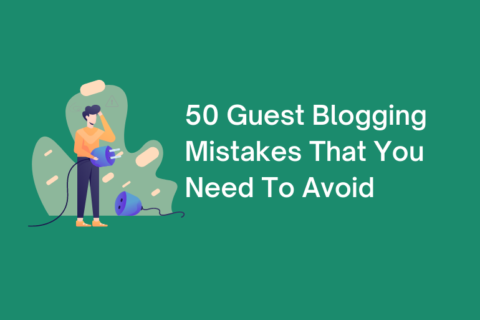Broken Link Building: How to Build Links that Last
An easy to understand broken link building guide for beginners
Move over, guest posting; there’s a new sheriff in town.
Here at GOBIGGR, whenever we talk about links, we always talk about guest posting, but that’s not the only strategy we’re good at. Because aside from guest posting, we also offer another link building strategy: broken link building.
We’ve heard of this technique making waves back in 2012, but not all people can seem to get a hang of this — but yes, we do. We learned a lot about this technique from one of the best in the business – Jon Cooper of PointBlankSEO, while working on some ad-hoc projects with his team.
We have developed our technique over time, and its results definitely put a wide smile on our clients’ faces, especially when we were able to get a link from Georgetown University.

We take no credit for its conception, but we can definitely say that the way we do broken link building has brought value for our clients indefinitely. We don’t just build links — we build links that last.
What is broken link building?
In Moz’s The Broken Link Building Bible, broken link building is defined as an efficient, white-hat, content-focused link building strategy through finding websites that have broken, 404 links and replacing it with fresh, informative, and up-to-date content through outreach.
Anyone can surely try broken link building as part of their strategy, but not everyone can pull off a broken link building campaign.
You see, broken link building isn’t as easy as guest posting; most websites are open for guest posts, but not all webmasters are open to editing an old post. However, broken link building isn’t as laborious as guest posting. With guest posting, you have to create content from scratch all over again. With broken link building, you only have to brainstorm every now and then to create various content assets that have high chances of “linkability”.
Broken link building brings in a wider perspective for us link builders. While it does help us bring in more high-quality, valuable links for our clients, we’re also making the Internet a better place with our informative content. Win-win!
How Do I Start A Broken Link Building Campaign?
Before you hunch in front of your screen looking for prospective links, let’s talk about how we can jumpstart your broken link building efforts. We’ll run you through our process, and even let you in a couple of our secrets:
Assess Linkability of your Client’s Niche
We’ve been spouting linkability for a while now; linkability simply refers to how capable or worthy your content is. Oftentimes, our clients come to us with their own content assets. But if you’re client doesn’t have enough content to start with, assess their website’s capability to get links. Here are some things to take notice:
- Some clients may have a business-centric domain — it reduces the chances of getting links since most bloggers and webmasters are aware of link building, and they may tag this as a commercial link. Solution: don’t be afraid to offer something unique. Think outside the box. Even if your client is a loan company, you can always create something valuable that it would be hard to resist.
- We recommend looking at a client’s link profile. Indeed, broken link building is a powerful strategy, but if by any chance that the website was hit with a penalty, you have to balance things out. It’s best to start with a clean slate!
- Research. You’re not the first one to do broken link building, nor create a kickass content. Dig and dive deep! There are many ways on how to offer valuable content. An insurance site can offer valuable content on traveling with disabilities, or a web hosting company can talk about website accessibility. On the other hand, look for competitors in the same niche — check out what they’ve invested in. There’s a high probability that you can target their links with your own effort.
- Learn to let go. However, if you cannot come up with an impactful content, just let it go. Don’t force the client to pay for trash, then later find out that your asset is more of an expensive liability.
Once that you can gauge the probability of getting links for the client, it’s now time to start sorting out your arsenal.
Determine or Create your Content Asset for Broken Link Building
There are two options in choosing a content for your broken link building campaign.
If your clients already have some decent content asset on their website, here’s what you can do:
- Research again. Ask yourself; is this linkable? What are the odds that this will be linked back? Who should I target for this kind of content? If you’ve seen people linking to the same type of content, it’s a good sign. But something typical may also lessen the chances of getting a link, that’s why…
- Check what you can improve. Do they have a 101 guide? See to it that it’s updated. Check for similar content found online. Do you see something that you can add to improve the value of the article? Do it. On the other hand, check if the article is properly structured. Improve the article flow by:
- Using headings in the article – it helps people know what the specific part is about.
- Chop down chunks of text in a paragraph – to make it more readable, you should put enough breathing space in between paragraphs. Put in some negative space with line breaks or images.
- Grammarly is your friend – Grammarly may miss some things but it helps to check your spelling. Some people find it unprofessional to have misspellings in the content.
- If necessary, develop an auxiliary asset. Content can be anything; most of the time it’s a skyscraper content. To accompany that asset, you may use images like infographics, videos, charts, and more. It can help you reach out more websites, especially those who curate information through infographics or more.
- Put it in a spreadsheet. Start organizing your bullets so you can refer to the list at any time.
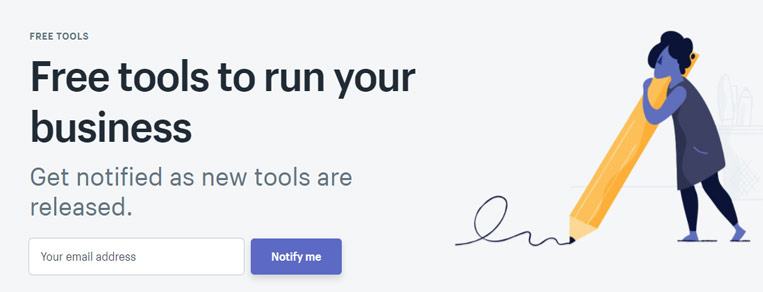
Not all linkable assets are text content, if your client has the budget, they should invest on creating useful tools that are highly usable and linkable by link targets.
On the contrary, if they don’t have an asset, you can always create one:
- Research again. The easiest way to do this is to check your competitors — both horizontally and vertically. They may have some ideas that you can polish further. If you have some people to target in mind, you can start from there. Your content asset shouldn’t exist solely for the sake of getting links. You can use it as a marketing tool, exhibiting your expertise on that issue.
- Brainstorm what goes in the article and create an outline. Sit down with your content team and brainstorm which parts would be useful for your campaign. When pitching in an asset, pitch it as a whole — in our experience, pitching just a part of the asset has yielded us with low returns. That’s why your content should be complete. Specify what you want to have in the outline, include references to be cited,
- Just do it. Whether you’re creating a long-form content or an instructional video, we recommend having your in-house team work on it. Creating a long-form content needs to be monitored for progress, and the accountability of getting it done on time can make the process more fluid. If you lack a certain set of skills, you can always outsource (to us 😉) or work on a less complicated asset first. If you want to maximize your client’s budget, a long-form content could be more useful in the long run.
- Have another pair of eyes go over the content when it’s It’ll be easier to spot mistakes, it’ll be easier to check where to improve. You can also get your client involved at this stage — get their expert opinion on some of the technical things you have included in the asset. After all, they know their business best.
- Before you hit “publish”, make sure you follow the content structure. If it’s an article, don’t forget your headings. Check the Preview if there’s any dangling sentences or awkward spaces. If it’s an image, be sure that you have Embed Links ready, so people can immediately embed it to their website, or have a web-friendly image ready to pitch. For videos, we recommend including subtitles and a transcript.
Here is a screenshot of a travel-related content asset that we produced for a hotel client in Australia. Can you guess the links that we targeted for linking?
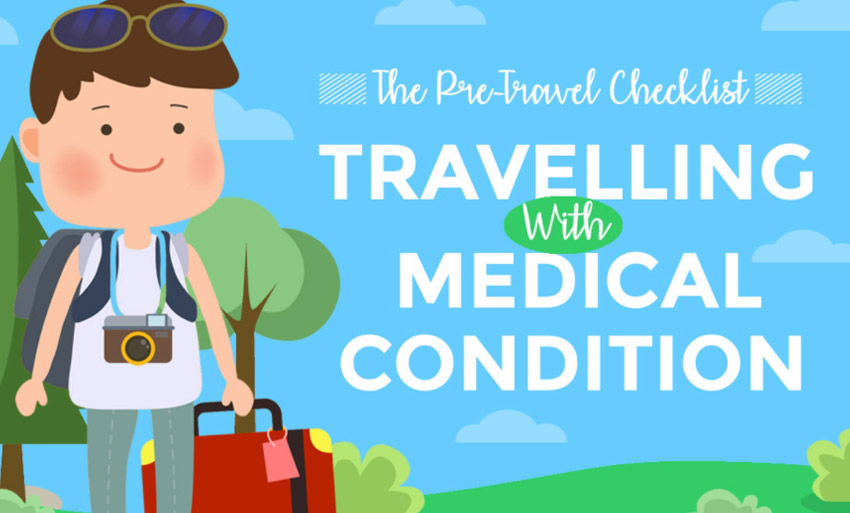
If you still don’t have any idea, we suggest you check on this – 10X content by Rand Fishkin and this from KaiserTheSage blog about content ideation.
Once everything’s up and ready to pitch, it’s time to start pitching!
Go back to your brainstorming session and determine your target blogs. Once you know where to pitch your asset, start looking for them!
Tip: Remember our guest post query tool? A few tweaks can turn it into a broken link building query tool!
Link Prospecting: The Most Strenuous Step in Broken Link Building
I don’t know if you agree, but link prospecting is the most grueling step to take in broken link building.
You may find web pages that have broken links, but it’s quite a challenge to match the specifics to our clients’ demands. You see, link prospecting for broken link building is nearly impossible, especially for difficult niches. In our experience, finance-related niches can be hard to link build especially that various countries already have created their own guides that are deemed more trustworthy. (many are in GOV pages which is well established and authoritative else a dominating resource like feedthepig or something better and older) — which leads us to this thought: broken link building isn’t for every niche to exploit.
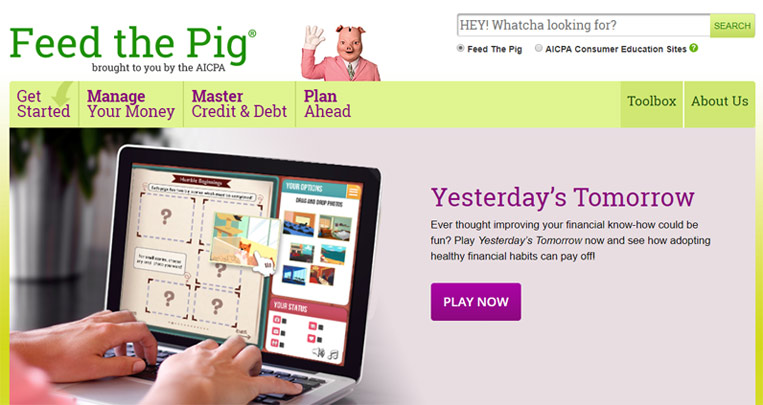
Feed the pig is one of the most highly linked resource in the finance niche.
There are some niches that are so easy to outreach, but some niches may need some groundbreaking content (not just talking about word count) in order to be tagged as a worthy resource.
If you’re still with us, let’s start with determining any metrics or conditions agreed upon between you and your client. Prospecting for broken links is similar to prospecting for blogs accepting guest posts. Referring to Moz’s Broken Link Building Bible, you can start prospecting by choosing any of these two prospecting techniques:
Targeting with Keywords. Using keyword research: again, this is the direct way to search for those broken links. Using keywords will help you target different niches. Keywords should be relevant, but not too specific. Search for keywords related to your content — not your client’s products or services.
When searching for prospects through a keyword search, you should be able to master the use of search queries and advanced operators. Our go-to reference for search queries is this humongous list from Optimize Smart: 10000 Search Engine Queries for your Link Building Campaign. From industry resources to reclamation opportunities, this is a comprehensive list of everything you need for your link building campaign.
Some search queries that we love to mix and match
- INURL:Resources + “Insert Keyword Here” – finds websites that have the word resources in its URL
- INTITLE:Guides + “Insert Keyword Here” – finds websites that have the word guides in its TITLE
- INURL:Library + “Insert Keyword Here” – find websites that have the worl library
- SITE:.EDU “Insert Keyword Here” ~Resources – find EDU websites that have keyword resources (plus other related terms using tilde)
- “Useful links” + “Insert Keyword Here” – find pages that has useful links in it.
Targeting with URLs. Supposedly you’ve seen someone create the same guide that you have to pitch; take that as an opportunity to get the same links as they have! For example:
We had a client with an asset on website development; we checked his competitors and voila! Instant link prospects!
Use a spreadsheet to store your prospects. Once you’ve gathered a decent number of prospects, get ready to pitch your asset!
We make sure to get the following:
- Actual page link to where the broken link/s is/are located.
- Webmaster name, or page owner’s name
- We also add the proper salutation like Dir (Director), Professor, or Ms. We refrain from addressing them as Sir or Ma’am, depending on a country’s customs. For example, you can address someone in the US using their first name regardless of age.
- Their personal or work email work just fine. As much as possible, get the right email that’s relevant to your prospect’s page. For example, if you’re contacting a teacher to add something on her personal blog, be sure to spend time looking for her personal address on that site. Do not contact her via her work email as this may be unwelcome for some.
- In our spreadsheet, we properly indicate which asset to pitch for that page to avoid confusion and needless rechecking.
- Add some notes as you go along; if you notice something relevant about your prospect, think if you can use it to your advantage when sending an outreach.
Sending Your Outreach Email: Some of Our Secrets, Exposed
We know this is a debatable topic, but our strategy is a combination of using templates + real conversations. Bloggers and webmasters have had enough of our nonsense outreach templates, so the challenge here is to create that killer first impression for your outreach.
I once attended and presented at SEO Shots in Makati, hosted by SEO Events PH. Some people raised questions about what we do and what tools we use. I dubbed our internal process as “Poor Man’s SEO” — not because we offer cheap links at an unbelievably low price (we don’t, so please don’t ask us), but we have always done things manually, with less dependency on tools to get our outreach done.
What we use:
- Gmail – good ol’ Gmail has our back. Most Chrome Extensions are compatible with Gmail, and boy do we love its flexibility.
- Gorgias Templates – yes, we do things manually, but it’s amazing to get that first pitch up and sending in a flash. By using this Chrome extension, we’ve saved a lot of time — trust us, it’s better than copy-paste! With Gorgias, you can tweak your outreach template from subject to closing. What we love about it: you can select variable salutations or statements once you get used to tweaking your template.
- Mailtrack – we don’t have the budget yet to purchase email tracking, but Mailtrack is an awesome tool that lets you track your emails for free! It even lets you track link clicks in an email if you upgraded your account to a paid subscription. There’s no limit in sending emails per day for their free accounts — sweet, right?
- Broken Link Checker by AtomSEO – another Chrome Extension that lets you check broken links in a page without taking a toll on your Internet connection. You can set your own keyboard shortcut to automatically run the extension.
- LinkedIn Sales Navigator (formerly Rapportive) – you’ll never know who you’re emailing unless you stalk search for your prospect thoroughly. This extension helps in cutting time searching especially if they have a LinkedIn account. With every outreach, we make sure we address our contact properly.
While we cannot divulge our own techniques for obvious reasons, we compiled a list of references that served as inspiration for our own templates:
- Email Outreach Tips: +22 Link Building Email Templates by Jason Acidre – Kaiserthesage himself has some outreach emails for your viewing pleasure, and he added some tips on how to customize it as your own.
- The Broken Link Building Bible by HiveDigitalnc – Still a relevant resource of templates
- I Just Deleted Your Outreach Email by Tim Soulo – If you want to be slapped with the truth that your outreach email sucks, then read Ahref’s Tim Soulo’s guide on building your very own template for outreach.
- The Link Builder’s Guide to Email Outreach by Neil Patel – the varying themes of his email outreach templates on this page can give you some good insights on changing yours regularly.
- Pitch Me: Nailing the Outreach Process by Alexis Trinidad – shameless plug from our own Head of Content, Alexis. This was aimed at guest posting, but you can still learn something from this deck. This deck emphasizes developing your knack for spontaneity. It can all start with a template but responding to the prospect is another story. There so much that you can do in engaging a prospect; you’ll never know when you might need his help again! Building relationships through your outreach can definitely help build more than just links.
The Secret to Building Links that Last
It’s not how long your links would last on the page; it’s how you can add value to a website through your awesome content. We know it sounds cheesy, but that’s the real secret behind it. There are no tools that can be tantamount to the skill and strategy a link builder possesses especially if he takes the time to dedicate himself to improving his technique.
Content assets set the standard — this is your own proof that what you’re offering is something beneficial, that you’re not just after a link to their website. Pitching the asset can also make or break your game. Pitching to the wrong prospect is a waste of time, so make sure that you’re pitching to the right niche. Moreover, exhaust all the possible ways of looking for prospects — don’t dwell on one technique too much.
Finally, a great outreach email template isn’t something you got from another’s blog; chances are that there’re thousands of link builders using the same template as you do. Get creative, be spontaneous! Create your own email template and improve how you respond to your prospects. Outreach doesn’t stop when you’ve sent your first email; it’s a continuous cycle until you either meet your goal or you didn’t succeed. Don’t be afraid to spice up your outreach a bit; use personalized responses to make your prospects feel that they’re talking to a real human, with no malicious intent in sharing links.
Ultimately, broken link building is effective if you know how to effectively use it as a link building technique for your clients.
Here is a bonus slideshare presentation that I used in SEO Shots at Makati. I presented 12 lessons that I learned in building 100 high value links for a client.
Have reactions, comments, or do you just wanna chat about your broken link building efforts? Let’s talk or reach out to us via Facebook and Twitter; we always appreciate a big pat on the back or debate on some of the topics we’ve discussed.
Jayson Bagio
Related Posts
50 Guest Blogging Mistakes That You Should Not Do
Share on facebook Facebook Share on twitter Twitter Share on linkedin LinkedIn Guest blogging has become a staple …
Simple Guest Post Prospects Finder (Query Tool)
Share on facebook Facebook Share on twitter Twitter Share on linkedin LinkedIn Guest posting is a difficult task, …


